Variation Characteristics of Rainfall in the Pre-Flood Season of South China and Its Correlation with Sea Surface Temperature of Pacific
Abstract
:1. Introduction
2. Data and Methods
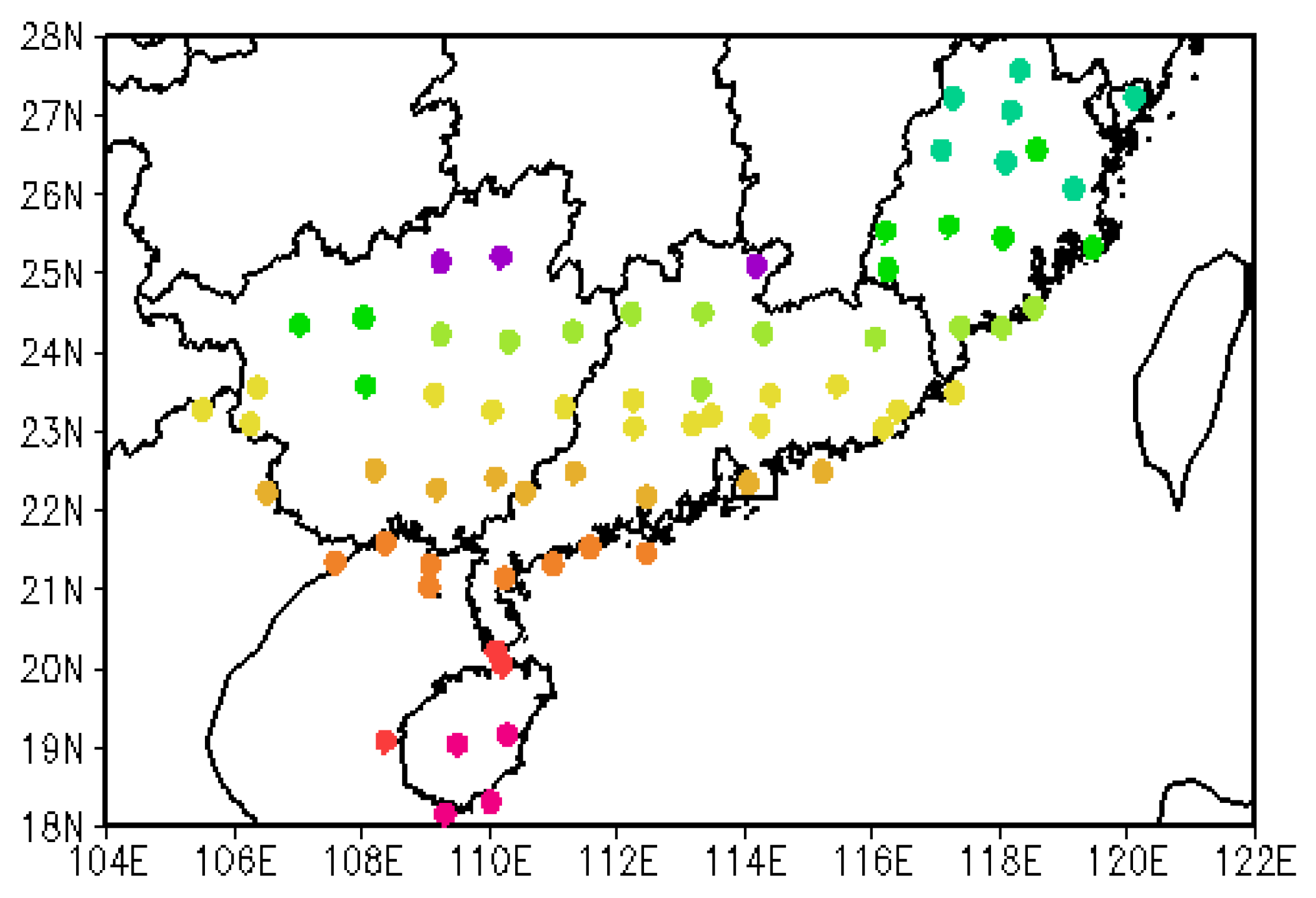
3. Rainfall Variation Characteristics in PFSSC
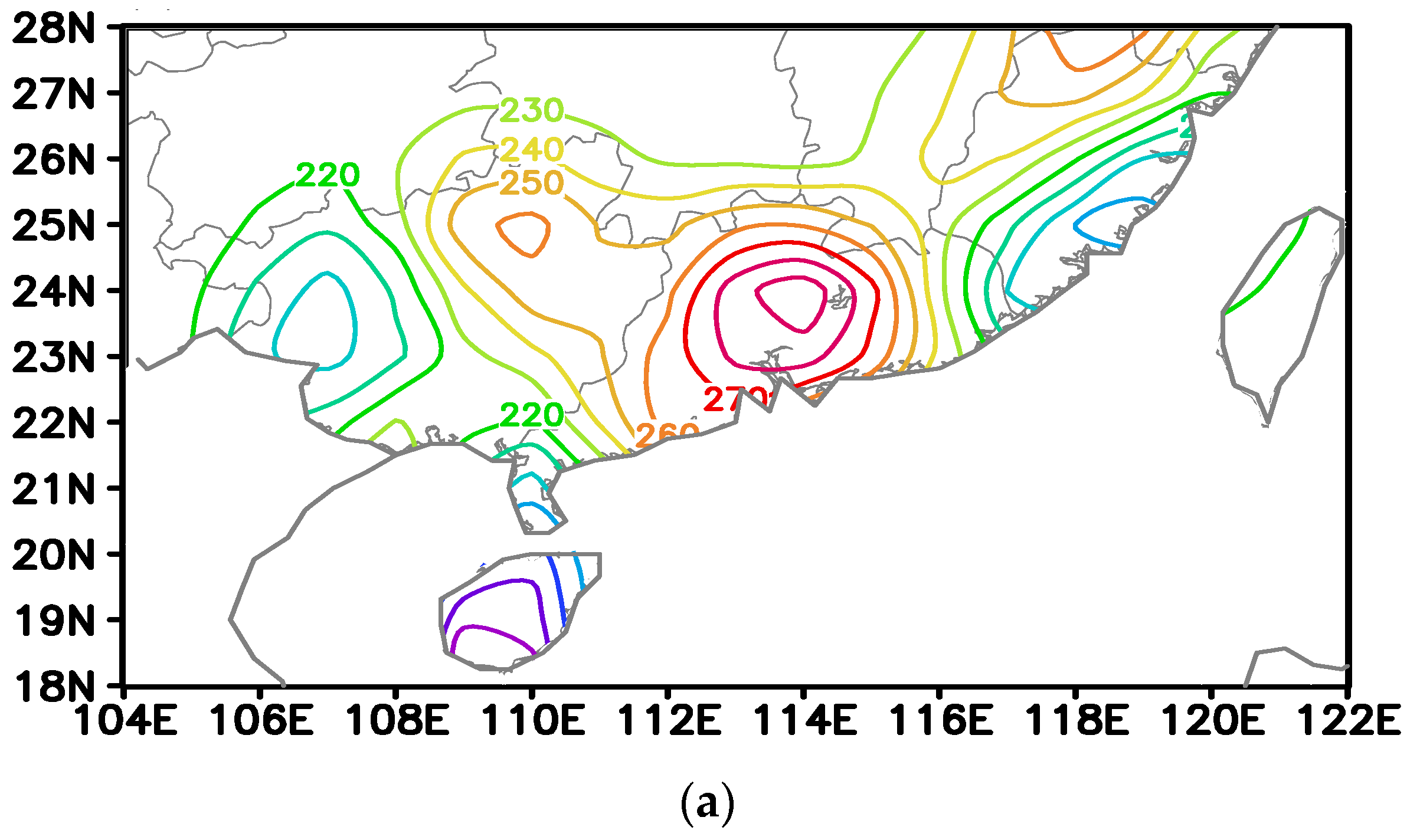
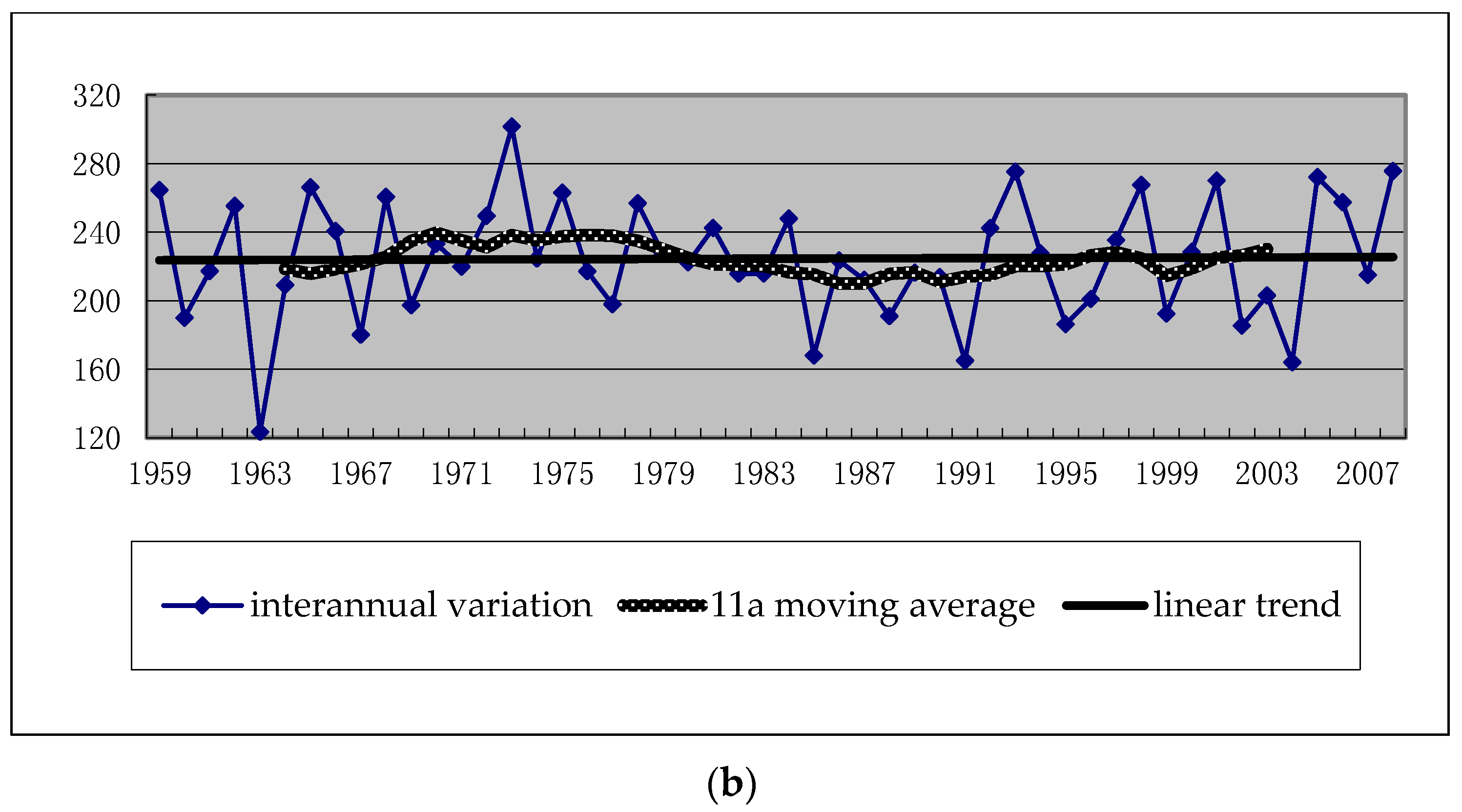
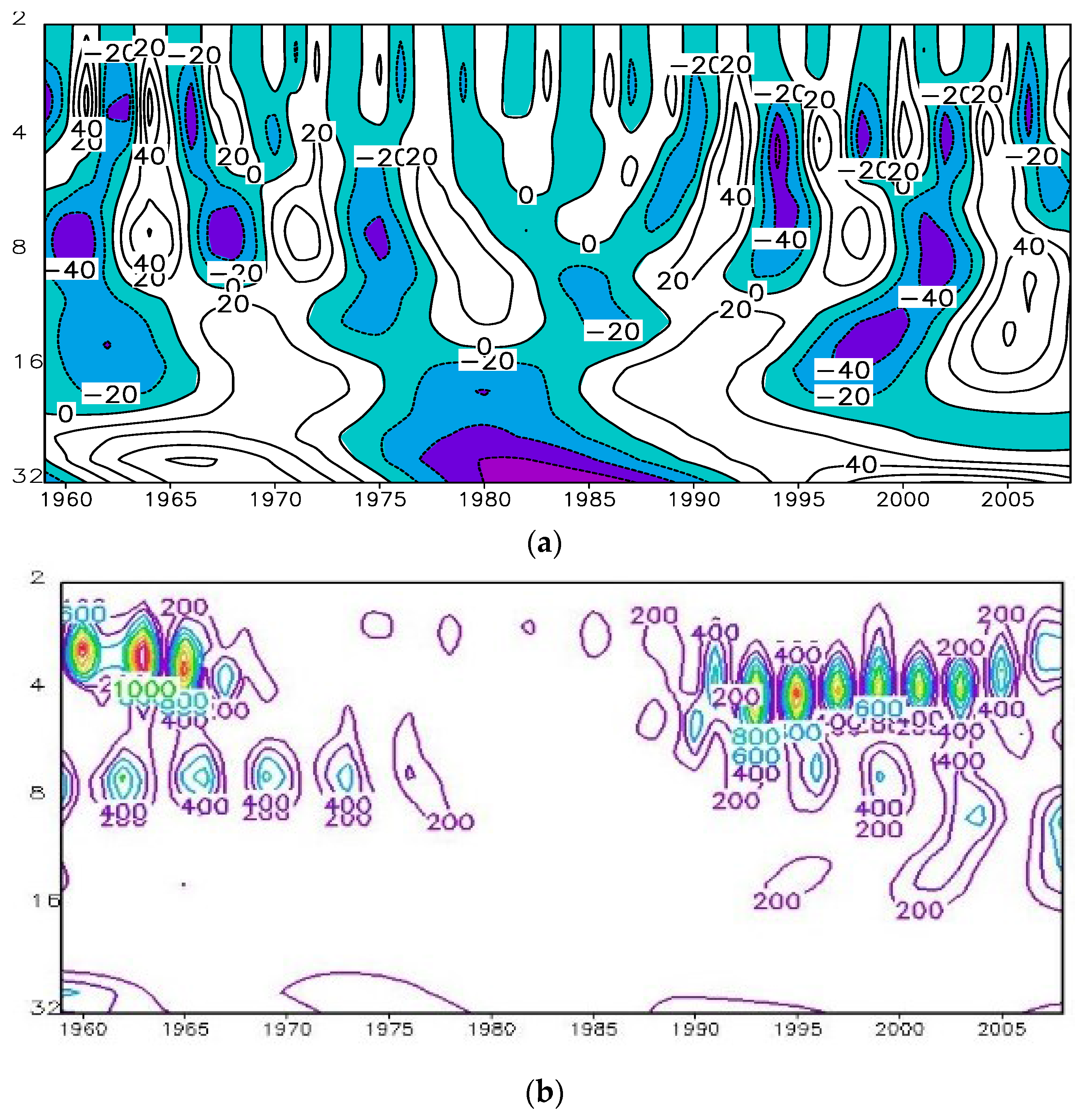
4. The Relationship between Rainfall in PFSSC and the SST of Pacific
4.1. The Correlation between the Rainfall in PFSSC and the SST of Pacific
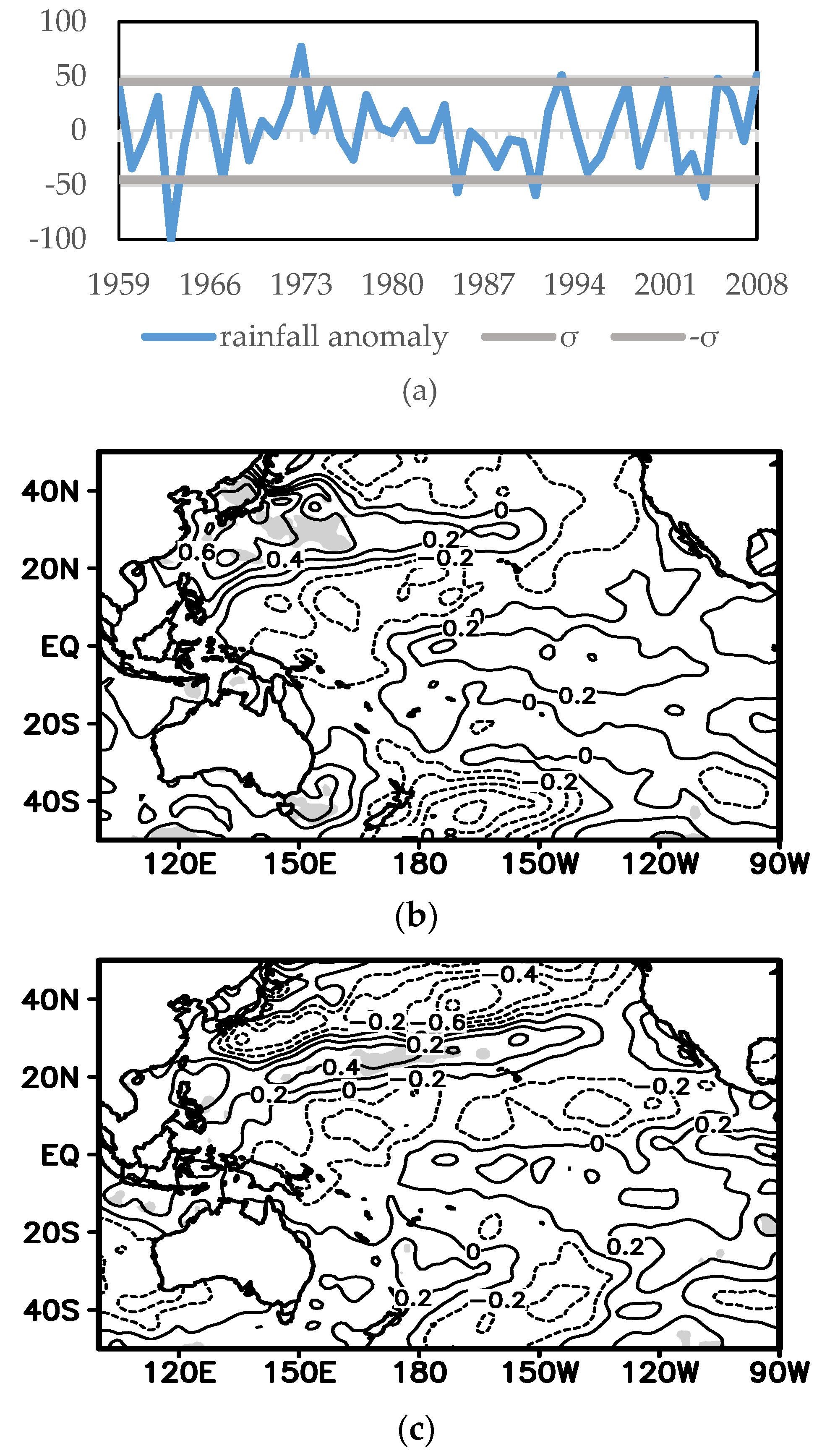
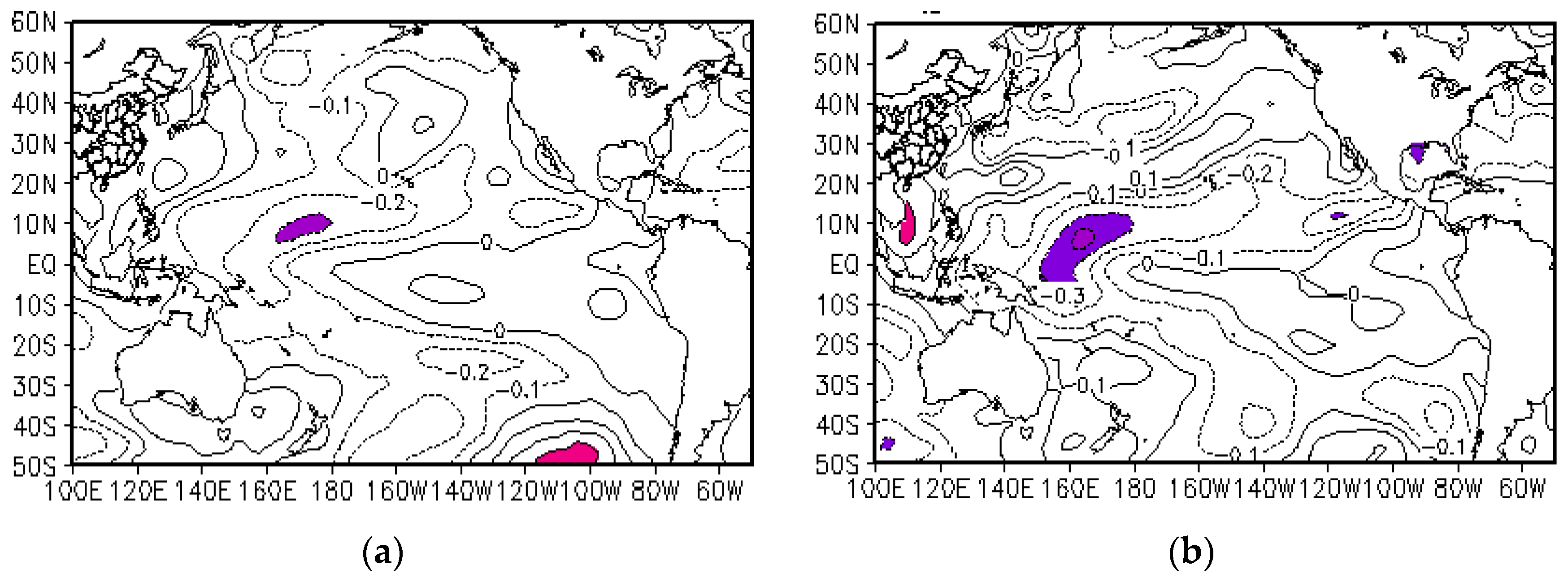

4.2. The Sliding Correlation Analysis of the Rainfall in PFSSC and Pacific Ocean Key Region Temperature
| Key Region | Longitude Range | Latitude Range |
|---|---|---|
| Nino 1 + 2 | 80°W–90°W | 10°S–0°S |
| Nino 3 | 90°W–150°W | 5°S–5°N |
| Nino 4 | 160°E–150°W | 5°S–5°N |
| Warm pool | 140°E–180°E | 10°S–10°N |

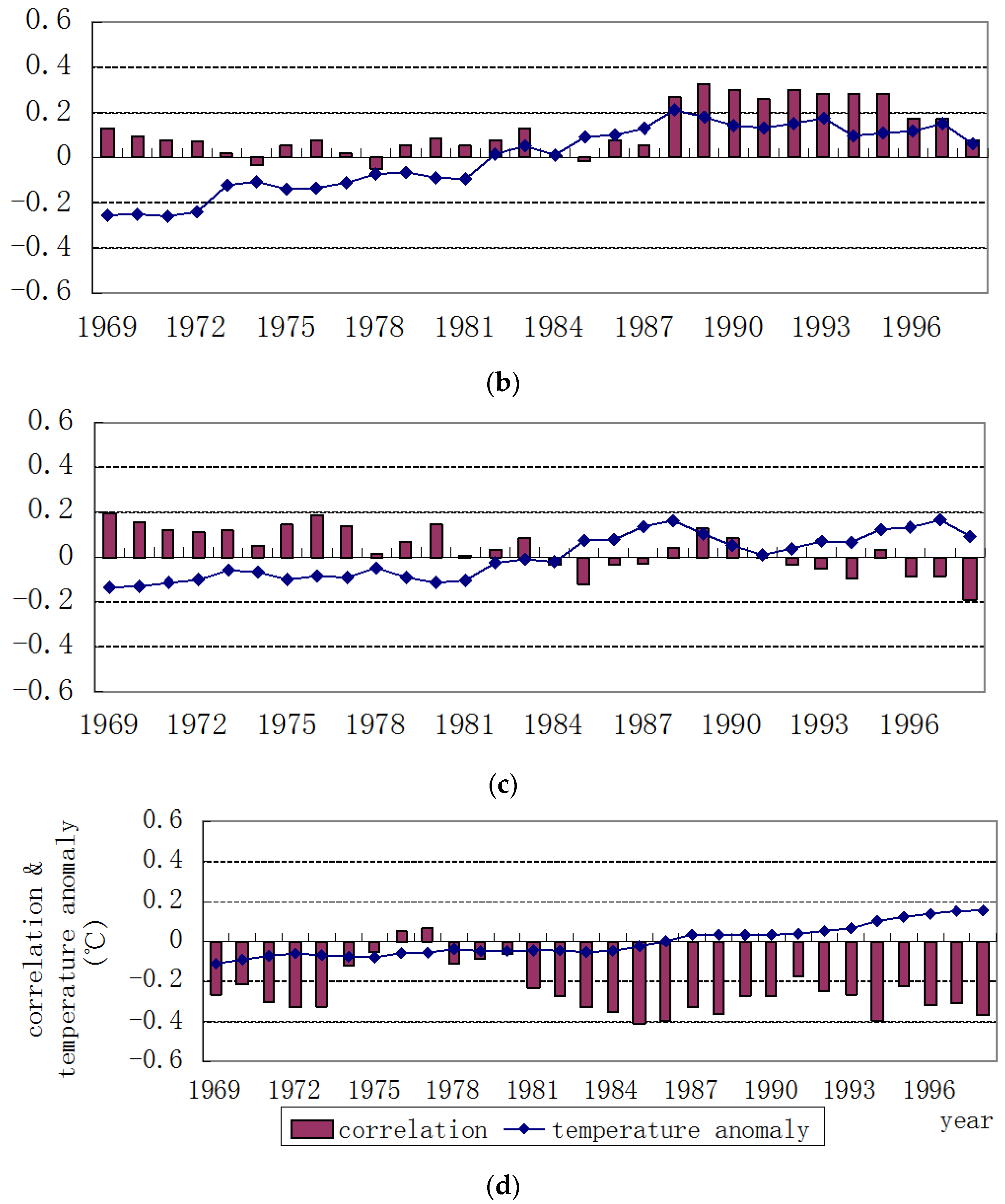
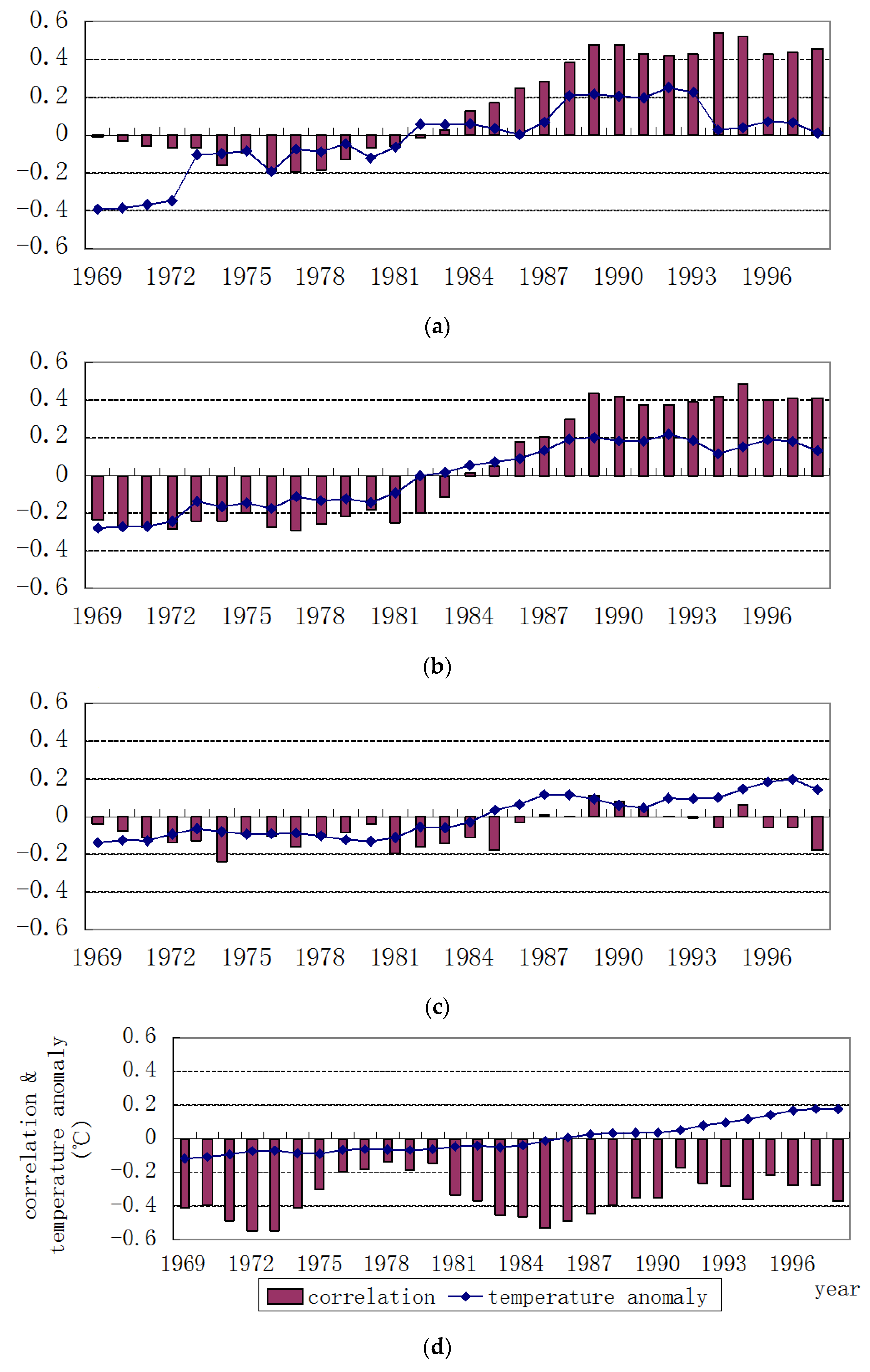
| Warm Year | Cold Year | |
|---|---|---|
| Warm ground | 1992, 1993, 1997, 1998 | 1995, 1996, 1999, 2003 |
| Cold ground | 1965, 1969, 1972, 1976 | 1962, 1964, 1971, 1978 |

5. Conclusions
Acknowledgments
Author Contributions
Conflicts of Interest
References
- Ma, H.; Chen, Z.H.; Mao, W.S.; Wang, Q.Q. Analysis of precipitation in the annually in the annually first rainy period and general circulation in the south of China. J. Trop. Meteor. 2009, 25, 89–96. [Google Scholar]
- Qiang, X.M.; Yang, X.Q. Onset and end of the first rainy season in south China. Chin. J. Geophys. 2008, 51, 1333–1345. [Google Scholar] [CrossRef]
- Ding, J.L.; Xu, Z.S.; Fei, J.F.; Qiang, X.M. Analysis of the definition of the onset and ending dates of the annually first rainy season in south China and its interannual variation characteristics. J. Trop. Meteor. 2009, 25, 59–65. [Google Scholar]
- Ma, H.; Wang, Q.Q.; Chen, Z.H. Spatial and temporal variations in pre-summer flood period precipitation of South China. Plateau Meteor. 2006, 25, 326–329. [Google Scholar]
- Wu, Z.; Jiang, W.Z.H.; He, J.H. The summer drought-flood coexistence in the middle and lower reaches of the Yantze River and analysis of its air-sea background feathers in anomalous years. Chin. J. Atmos. Sci. 2006, 30, 391–401. [Google Scholar]
- Zhang, Y.; Sun, Z.B.; Bai, Y.Y. Drought/flood characteristics of pre-flood season in South China in recent 47 years. J. Nanjing Inst. Meteor. 2008, 31, 176–182. [Google Scholar]
- Wu, S.S.; Liang, J.Y. Temporal and spatial characteristics of the drought and flood during the rainy season in South China. J. Trop. Meteor. 1992, 8, 87–92. [Google Scholar]
- Xin, F.; Xiao, Z.N.; Li, Z.C. Relation between flood season precipitation anomalies in South China and East Asian atmospheric low frequency oscillation in 1997. Meteor. Mon. 2007, 33, 22–30. [Google Scholar]
- Huang, X.X.; Yan, L.J.; Shi, N. Influence factors and precidition method on flood/drought during the first rainy season in South China. J. Trop. Meteor. 2006, 22, 431–438. [Google Scholar]
- Chen, M.; Tao, Z.Y.; Zheng, Y.G. The front-related vertical circulation occurring in the pre-flooding season in South China and its interaction with MCS. Acta Meteor. Sin. 2007, 65, 785–791. [Google Scholar]
- Huang, X.D.; Zheng, W.J. Mutiple temporal scale feature of coupled relationship between rainfall in first flood season of South China and 500 hPa height. Meteor. Mon. 2005, 31, 35–38. [Google Scholar]
- Ma, H.; Chen, Z.H.; Jiang, L.P.; Wang, Q.Q. SVD analysis between the annually first raining period precipitation in the south if China and the SST over offshore waters in China. J. Trop. Meteor. 2009, 25, 242–245. [Google Scholar]
- Chen, Y.M.; Qian, Y.F. Numerical study of influence of the SSTA in western pacific warm pool on precipitation in the first flood period in South China. J. Trop. Meteor. 2005, 21, 13–23. [Google Scholar]
- Yao, S.X.; Zhang, Y.C. Correlation between precipitation in the Yangtze-Huaihe River valley during Meiyu period and sea surface temperature in the Pacific Ocean and their interdecadal variations. J. Nanjing Univ. 2006, 42, 298–308. [Google Scholar]
© 2015 by the authors; licensee MDPI, Basel, Switzerland. This article is an open access article distributed under the terms and conditions of the Creative Commons by Attribution (CC-BY) license (http://creativecommons.org/licenses/by/4.0/).
Share and Cite
Yao, S.; Huang, Q.; Zhao, C. Variation Characteristics of Rainfall in the Pre-Flood Season of South China and Its Correlation with Sea Surface Temperature of Pacific. Atmosphere 2016, 7, 5. https://doi.org/10.3390/atmos7010005
Yao S, Huang Q, Zhao C. Variation Characteristics of Rainfall in the Pre-Flood Season of South China and Its Correlation with Sea Surface Temperature of Pacific. Atmosphere. 2016; 7(1):5. https://doi.org/10.3390/atmos7010005
Chicago/Turabian StyleYao, Suxiang, Qian Huang, and Chen Zhao. 2016. "Variation Characteristics of Rainfall in the Pre-Flood Season of South China and Its Correlation with Sea Surface Temperature of Pacific" Atmosphere 7, no. 1: 5. https://doi.org/10.3390/atmos7010005





